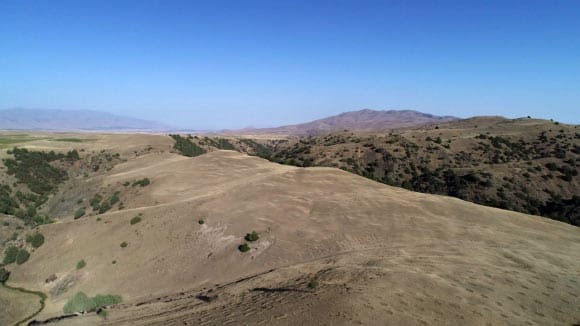Named Tashbulak and Tugunbulak, these two medieval cities are among the largest ever documented in the mountainous parts of the Silk Road, the vast network of ancient trade routes that connected Europe and Eastern Asia.

A drone captured this image of Tugunbulak in 2018. Image credit: M. Frachetti.
Tashbulak and Tugunbulak are located in rugged terrain 2,000 to 2,200 m above sea level (roughly comparable to Machu Picchu in Peru), making them unusual examples of thriving mountain urbanism.
The smaller city, Tashbulak, covered about 12 hectares, while the larger city of Tugunbulak reached 120 hectares, making it one of the largest regional cities of its time.
“These would have been important urban hubs in central Asia, especially as you moved out of lowland oases and into more challenging high-altitude settings,” said Professor Michael Frachetti, an archaeologist at Washington University in St. Louis.
“While typically seen as barriers to Silk Road trade and movement, the mountains actually were host to major centers for interaction.”
“Animals, ores, and other precious resources likely drove their prosperity.”
“The site of Tugunbulak had an elaborate urban structure with specific material culture that greatly varied from the lowland sedentary culture,” added Dr. Farhod Maksudov, director of Uzbekistan’s National Center of Archaeology.
“It’s clear that the people inhabiting Tugunbulak for more than a thousand years ago were nomadic pastoralists who maintained their own distinct, independent culture and political economy.”

Composite lidar view of Tugunbulak. Image credit: SAIElab / J.Berner / M. Frachetti.
The plazas, fortifications, roads, and habitations of Tashbulak and Tugunbulak were revealed by drone-based lidar scanning.
“These are some of the highest-resolution lidar images of archeological sites ever published,” Dr. Frachetti said.
“They were made possible, in part, because of the unique erosion dynamics in this mountain setting.”
“Both cities warrant much closer inspection,” he added.
“Preliminary digging at one of the fortified structures at Tugunbulak suggests that the fortress — a building protected by 3-m-thick rammed earth walls — might have been a factory where local metalsmiths turned rich deposits of iron ore into steel.”
“Such industry would have been a key feature of the city and its economy.”
It’s already clear that Tashbulak and Tugunbulak weren’t just remote outposts or rest stops.
“The Silk Road wasn’t just about the endpoints of China and the West,” Dr. Frachetti said.
“Major political forces were at play in Central Asia. The complex heart of the network was also a driver of innovation.”
The team’s results were published this month in the journal Nature.
_____
M.D. Frachetti et al. 2024. Large-scale medieval urbanism traced by UAV-lidar in highland Central Asia. Nature 634, 1118-1124; doi: 10.1038/s41586-024-08086-5
